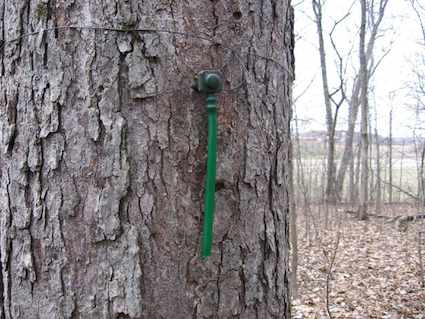I wandered into a shop in Talkeetna, a town of a few hundred souls in the interior of south central Alaskan (map). There I discovered an assortment of small plastic jugs with a strange and rare substance offered for sale: birch syrup. I’d never heard of this particular agricultural product before. Sure, I’ve consumed more than my share of maple syrup over the years. However, I’d lived my entire life without running across birch syrup. Is it genuine? Does it actually come from a birch tree? And why does it command such an eye-popping price?

The phenomenon is real. Birch, like Maple, produces a sugary sap. Therefore producers can reduce it into a syrup through the removal of nearly all of its water content. They usually use a combination of reverse osmosis and evaporation through boiling.
Range
Talkeetna sits at the northern edge of the Matanuska-Susitna Valley. Apparently this is the epicenter of the commercial production of birch syrup. However, the entire worldwide yield equals maybe only 1,000 – 1,500 gallons (~5,000 liters) per year! The vast majority of this comes from the hands of hardworking farmers and homesteaders in the Mat-Su.

The Alaska Birch, a variety of Paper Birch, is the source for most of the sap for commercially-produced syrup. It ranges widely from the Boreal forests of central Alaska into Canada’s Yukon, Northwest Territories, and down into the Prairie Provinces. Theoretically, sap harvesting could take place in all of these places. Even so it hasn’t caught-on in any meaningful way except in Alaska.
Scarcity

There are valid reasons for the scarcity of birch syrup. They all combine to support a common theme: it’s darn difficult to produce.
- A single gallon of birch syrup requires the evaporation of about a hundred gallons of raw birch sap. Contrast that with maple syrup which requires about forty gallons for the same result.
- The tapping window for birch, the period when sap flows freely through the trunks, is much shorter than maple. Harvesters, or sap-suckers, have only two or three weeks to get the job done.
- The root and trunk pressure in birch trees is lower than maple too. That makes it even more difficult to extract the sap.
A friend of my wife’s family in south-central Wisconsin makes his own maple syrup on a scale larger than a hobby but smaller than a business. That’s where I took the photograph of the tapped tree, above. I’ve seen first-hand how the operation works and it’s an amazingly labor intensive endeavor. I can’t imagine how much effort it would take for someone to produce any meaningful amount of the even more difficult birch syrup.
A birch tree will only produce about 0.75 gallons of sap per day, for maybe 20 days. Lets do some quick math. A tree will produce perhaps 15 gallons of sap a year. Thus it takes nearly seven mature trees to create enough sap for a single gallon of syrup under ideal conditions!
Is there any wonder that a quart of the stuff sells for $74 and a 4 ounce bottle for $11? Granted, 2010 was a low sugar year. Nonetheless, I’d still feel guilty about pouring something that valuable onto a waffle or a pancake. It’s liquid gold.
Another Possibility
Incidentally harvesters could use other varieties of paper birch trees for similar purposes. Some of those grow natively in the New England region of the United States. However, the online magazine, Heart of New England, speculates that no incentive exists. Sugar maples grow there ubiquitously and it requires much less time and effort than birch. In Alaska, on the other hand, they only have birch. It’s birch or nothing.
I didn’t purchase any birch syrup on my trip through Talkeetna. If I were to repeat my trip — knowing what I’ve since learned — I’d at least get one of the small bottles. It’s supposed to offer a unique flavor that’s quite a bit different than maple. Additionally, I’ll gladly give it a review if anyone in the birch syrup community stumbles across this blog and wants to send me a sample.
Right. Nobody ever takes me up on these offers.

Leave a Reply